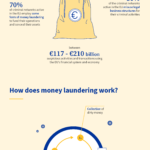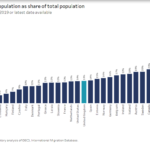The following are some interesting facts about the U.S. financial services industry from a research report published by The Financial Services Roundtable. I have included my comments for some of the events.
Year Event
1782 Pennsylvania chartered the first bank in the U.S.
1790 The federal government refinanced all federal and state Revolutionary War debt, issuing $80
million in bonds. These bonds became the first major issues of publicly traded securities, marking
the birth of the U.S. investment markets.
1791 Secretary of the Treasury, Alexander Hamilton, established First Bank of the United States.
1792 Insurance Company of North America, first stock insurance company, established.The
Buttonwood Agreement, pact between 24 brokers and merchants to trade securities on a
common commission basis, marked the origins of the New York Stock Exchange. Bank of
America(BAC) was first listed stock.
1809 The first bank failure happened in Rhode Island. Bank failures continue to occur this day. To date
three banks have been shut down by the FDIC this year. These closures have become the Friday
Night Follies of this era. Bank of America (BAC) almost failed but exists in tact today as they
were bailed out by the state.
1863 Office of the Comptroller of the Currency was established in the U.S. Treasury Department. The
agency was authorized to charter banks and issue national currency.
1875 American Express (AXP) established the first pension plan in the U.S. American Express exists
still today as a highly ranked player in the global credit card industry.
1909 St. Mary’s Cooperative, the first U.S. credit union, formed in New Hampshire. Today there are
7,535 credit unions serving 92 million customers in the country.
1913 The Federal Reserve was established to replace J.P. Morgan as lender of last resort. It is
interesting to see how one man was rich and powerful enough to bail out the whole economy in
those days. JP Morgan Chase (JPM) is one of the four US “super-banks”.
1924 First mutual funds established in Boston. As of 2010, there are a total of 7,581 funds in the U.S.
Despite the many crashes in the markets since 1924, the growth of the mutual fund industry is
simply astonishing.
1929 The stock market crashed. Nearly 10,000 U.S. banks failed across the land and millions of people
lost their savings.
1932 The Federal Home Loan Bank Act established Federal Home Loan Bank System to act as central
credit system for savings and loans institutions.
1933 The Glass-Steagall Act, separating banking and securities industries, passed by Congress. Much of
the restrictions placed by this law was repealed by President Clinton during the late 1990s.
Federal Deposit Insurance Corporation, guaranteeing accounts up to $2,500, opened. At the height
of the credit crisis, this limit was raised to $250,000.
1955 First U.S.-based international mutual fund introduced. But even today most US funds are focused
on the US markets.
1970 The U.S. government introduced mortgage-related securities to increase liquidity. National Credit
Union Administration was created to charter and supervise federal credit unions.
1972 Money market mutual funds were introduced for the first time.
1974 Automated teller machines (ATMs) were widely introduced by banks.
1975 The SEC deregulated broker commissions by eliminating fixed commissions brokers charged for
all securities transactions. As a result, the U.S. has the lowest securities transaction costs in the
developed world.
1989 The Financial Institutions Reform, Recovery and Enforcement Act was established, providing
government funds to insolvent savings and loan institutions (S&Ls) from the Resolution Trust
Corporation. Similar to the bailouts during of the credit crisis, tax payers footed the bill in the
earlier banking crisis as well.
1999 The Gramm-Leach-Bliley Financial Services Modernization Act allowed banks, insurance
companies and securities firms to affiliate and sell each other’s products.
2005 The Federal Bankruptcy Prevention and Consumer Protection Act was enacted to tighten rules
for personal bankruptcy.
2008 Failed lender Washington Mutual was taken over by JPMorgan Chase after it was shut down by
federal regulators, marking the largest failure in banking history. Confirming the failure of state
involvement in the free markets, the federal government took over Fannie Mae and Freddie Mac.
Securities giant Lehman Brothers also failed, marking the largest bankruptcy in U.S. history.To
prevent a total collapse of the financial system, the TARP was hastily established with a $700
billion rescue plan for the financial services industry.
2010 The Dodd-Frank Wall Street Reform and Consumer Protection Act, landmark regulatory
overhaul of the financial services industry, was signed into law. After years of failing to protect
consumers, the federal government finally enacted laws providing some consumer protections
related to credit cards. President Obama signed the Patient Protection and Affordable Care Act,
requiring most U.S. citizens to have health insurance thus giving a bonanza to the healthcare
industry.
Source: The Financial Services Fact Book 2011, The Financial Services Roundtable
Disclosure: No Positions



